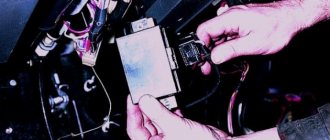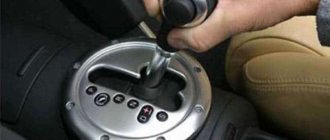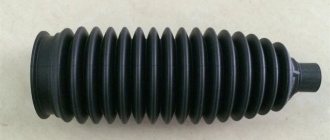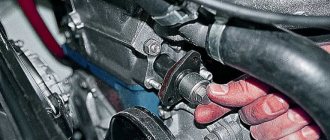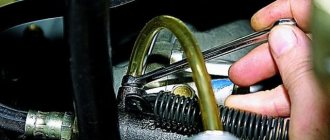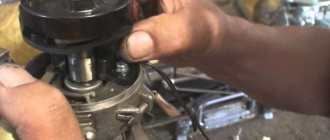Articles
- 2 True or false
2.1 Differences between a capacitor and a battery
- 2.2 Differences between a capacitor and an ionistor
2.2.1 Checking the ionistor
- 4.1 Focal
Why do you need a capacitor for car audio?
Why a capacitor is needed for car audio is known to all those who have dealt with car audio in one way or another. The fact is that when installing an audio system with your own hands, you have to study a lot of materials. And the recommendations indicate that a capacitor or storage device must be installed along with the amplifier. Are capacitors needed for car acoustics or are these all myths? If they are needed, then why and what is their role in the entire system. This is what we will talk about in our article.
general information
The best capacitors for acoustics
So why do you need a capacitor? As you know, the price for it is not small and not all motorists, even lovers of good sound, want to cut their budget once again. On the other hand, every music lover sooner or later acquires a powerful speaker system or brings it to perfection. This is very good, but the more powerful the system, the more energy you give it.
Note. The battery is not capable of delivering such energy, as a result of which a drawdown occurs (what this means is described in detail below). The drawdown is expressed by the fact that the car’s headlights begin to “blink,” the amplifier’s power drops, and the bass coming from the subwoofer, which was previously clear, becomes “blurry.” In some and especially severe cases, a sharp drop in amplifier voltage leads to clipping, which can damage the speakers.
What equipment capacity is needed?
There is no exact formula here. Many follow this rule: 1 kW. from the power of the amplifier must correspond to 1 F of the capacitor capacitance. This is normal and most users purchase the design precisely for this reason. For example, if your car has an audio system with a power of 2 kW, then you need to purchase a drive with a capacity of 2 Farads. But experts recommend choosing a device with a large supply of capacity.
Subwoofer amplifier and capacitor
Some models have built-in voltmeters. They control the system voltage level. Devices with voltmeters are more expensive.
True or not
Auto acoustics review
To this day, on the Internet, in various forums and blogs, there are heated debates regarding the need or uselessness of such a storage device as a capacitor. The debates themselves, to the great regret of car audio lovers, do not lead to any truth. They are completely useless, due to the fact that opponents do not even have a basic school understanding of physics.
Note. The biggest nonsense that can be read from forums is that you need to install a capacitor based on only farads per kilowatt. Such recommendations are fundamentally wrong, since you will not understand where they came from.
So, to lift the veil somewhat, let's go back to our physics lessons. As valuable knowledge is updated in our memory, all myths will disappear like morning smoke.
Differences between a capacitor and a battery
It is important to know:
- A capacitor for a woofer is the same power consumer that is not capable of generating electricity itself. But it is capable of accumulating it and then consuming it for its own leaks, but not for battery leaks;
- The capacitor's task is to accumulate energy and then release it to the consumer. The drive itself has extremely low internal resistance and for this reason “parts” with energy very quickly (by the way, it does not accumulate it slowly either).
Note. The difference between a capacitor and a battery is that the peak energy output of a capacitor occurs only for the first moment, and then there is a sharp drop in charge. Thus, the recoil speed drops along with the charge.
Differences between a capacitor and an ionistor
Capacitor for subwoofer
Ionistors are what most music lovers carry in their trunks. It differs from a capacitor in the following parameters:
- Huge losses;
- Greater resistance;
- Releases charge much more slowly;
- It costs several times less than a capacitor of the same capacity.
The optimal operating time of the ionistor is: 1 sec/83 cool.
Checking the ionistor
It is recommended to check the ionistor to clearly understand how it works:
- We connect the ionistor to the speaker system with power drawdowns;
- We start it up and observe that the voltage at the terminals increases. So far so good;
- We increase the volume and notice that the voltage drops from 13 to 10 volts.
Note. All this means that at the first hit of the subwoofer, the charge will drop and the ionistor will turn into an extra power component, since it is useful and active only when its charge is greater than the voltage in the network.
This situation among car audio enthusiasts is called sag, but it can be much worse if thin, low-quality wires and cheap copper-plated aluminum are used in the power supply. In this case, cable subsidence is also added to the normal subsidence.
Note. You need to know the dangers of cable sag. The fact is that with a sharp increase in consumption, reactance occurs. The more and faster the user tries to take energy from the cable, the more it (the cable) will interfere with this (if it is thin and long).
The problem of a cheap and low-quality cable will also be reflected in the ionistor, which, having discharged, will no longer be able to receive energy.
Capacitor for a subwoofer, what it is, how to install and charge
The operation of powerful car subwoofers may be accompanied by problems associated with the high current consumption of these devices. You can notice this at low frequency peaks, when the subwoofer “chokes.”
This is explained by voltage drops at the subwoofer power input. An energy storage device, the role of which is played by the capacitance of a capacitor connected to the subwoofer power circuit, helps to correct the problem.
Why do you need a capacitor for a subwoofer?
An electrical capacitor is a two-pole device capable of accumulating, storing and releasing electrical charge. Structurally, it consists of two plates (plates) separated by a dielectric. The most important characteristic of a capacitor is its capacitance, which reflects the amount of energy that it can accumulate. The unit of measurement for capacitance is the farad. Of all types of capacitors, electrolytic capacitors have the highest capacity, as well as their further improved relatives - ionistors.
To understand why a capacitor is needed, let’s figure out what happens in the car’s electrical network when low-frequency car acoustics with a power of 1 kW or more are connected to it. A simple calculation shows that the current consumed by such devices reaches 100 amperes or more. The load is uneven, the maximums are reached at the moments of bass hits. The voltage drop when the car audio passes through the peak of the bass volume is caused by two factors:
- The presence of internal resistance of the battery, limiting its ability to quickly release current;
- The influence of the resistance of the connecting wires, causing a voltage drop.
The battery and capacitor are functionally similar. Both devices are capable of storing electrical energy and subsequently releasing it to the load. The capacitor does this much faster and more readily than the battery. This property underlies the idea of its application.
The capacitor is connected in parallel to the battery. With a sharp increase in current consumption, the voltage drop across the internal resistance of the battery increases and, accordingly, decreases at the output terminals. At this moment the capacitor comes into operation. It releases the accumulated energy, and thereby compensates for the drop in output power.
How to choose a capacitor
The required capacitor capacity depends on the power of the subwoofer. In order not to go into complex calculations, you can use a simple rule of thumb: for 1 kW of power, a capacitance of 1 farad is required. Exceeding this ratio is only beneficial. Therefore, the most common high-capacity capacitor on sale, 1 farad, can also be used for subwoofers with a power of less than 1 kW. The operating voltage of the capacitor must be at least 14 - 18 volts. Some models are equipped with a digital voltmeter indicator. This creates additional ease of use, and electronics that control the charge of the capacitor make this procedure easier.
How to connect a capacitor to a subwoofer
Installing a capacitor is not a complex procedure, but when performing it you need to be careful and follow some rules:
- To avoid a noticeable voltage drop, the wires connecting the capacitor and the amplifier should not be longer than 50 cm. For the same reason, the cross-section of the wires must be chosen large enough;
- · Polarity must be observed. The positive wire from the battery is connected to the positive power terminal of the subwoofer amplifier and to the capacitor terminal marked with a “+” sign. The capacitor terminal marked “-” is connected to the car body and to the negative terminal of the amplifier power supply. If the amplifier was previously connected to ground, the negative terminal of the capacitor can be clamped with the same nut, while maintaining the length of the wires from the capacitor to the amplifier within the specified limits of 50 cm;
- When connecting a capacitor to an amplifier, it is better to use standard clamps to connect wires to its terminals. If they are not provided, you can use soldering. Twisted connections should be avoided as significant current flows through the capacitor.
Figure 1 illustrates the connection of a capacitor to a subwoofer.
How to charge a capacitor for a subwoofer
To connect to the car's electrical network, an already charged car capacitor should be used. The need to perform this action is explained by the properties of the capacitor, which were mentioned above. The capacitor charges as quickly as it discharges. Therefore, at the moment the discharged capacitor is turned on, the current load will be too high. If the purchased subwoofer capacitor is equipped with electronics that control the charging current, you don’t have to worry; feel free to connect it to the power circuits. Otherwise, the capacitor should be charged before connection, limiting the current. It is convenient to use an ordinary car light bulb for this, turning it on against the power supply circuit. Figure 2 shows how to properly charge large capacitors.
At the moment of switching on, the lamp will light up at full intensity. The maximum current surge will be limited by the power of the lamp and will be equal to its rated current. Further, during the charging process, the glow of the lamp will weaken. At the end of the charging process, the lamp will go out. After this, you need to disconnect the capacitor from the charging circuit. Then you can connect the charged capacitor to the amplifier's power supply circuit.
If after reading the article you still have questions about connection, we recommend that you read the article “How to connect an amplifier in a car.”
Additional benefits of installing capacitors in cars
In addition to solving problems with the operation of the subwoofer, a capacitor connected to the car network has a positive effect on the operating mode of electrical equipment as a whole. This manifests itself as follows:
- The capacitor is a good filter for high-frequency components of the mains voltage that arise when switching loads and operating some electronic devices; its functions have a beneficial effect on the operation of all vehicle systems;
- The use of a capacitor makes it possible to smooth out voltage surges that occur when consumers on the on-board network are turned on and off, which allows the generator to operate in a more even mode;
- When the car is started by the starter, the capacitor, of course, takes an additional part in it, giving its charge to the on-board network. This is especially true in winter, when the battery’s ability to deliver current decreases, but the properties of the capacitor do not change.
The capacitor is installed, and you notice that your subwoofer is starting to play more interestingly. But if you try a little, you can make it play even better, we suggest you read the article “How to set up a subwoofer.”
Condenser installation
When installing a capacitor, it is recommended to connect it in parallel with the power supply of the amplifier (see How to connect an amplifier to a car radio: you are your own master). It must be placed as close as possible to the power amplifier, at least no further than 60 cm. If you put a capacitor in place of the ionistor, the result will be much more effective. Everything is done like this:
- The car generator is repaired or a new one is installed;
- A cable is laid from it to ground and plus;
- A new battery is installed;
- All terminals are changed or thoroughly cleaned;
- A good quality power copper cable with a sufficient cross-section is laid;
Capacitor circuit
- We connect the amplifier, do not forget the fuse.
Advice. Until we check all the terminals and make sure that there is 14 volts, we do not connect the capacitor.
- After everything has been checked, you can connect the capacitor. Measurements at the terminals will show the same results, but you shouldn’t be surprised. If the circuit is “live” and there is enough power, then the capacitor has nothing to turn on and it seems to be waiting in the wings.
Note. Another misconception is the fact that supposedly a capacitor is needed in systems where high volume is required or in SPI El competitions. In normal cases, a capacitor will successfully replace an ionistor.
You can prove the need for a capacitor in conventional car speaker systems based on the following:
- Measuring the capacitor can last a long time, and this will “wake up” even the most acidic battery and thus be able to give up its full potential;
- Among the so-called espi ale fraternity, the use of gel batteries, capable of “shooting” hundreds of amps with amazing speed, is more common. No matter how much we praise the capacitor, at such a speed it will “feel” clearly out of work;
- Again, regarding the espi el, the capacitor is out of place, since it is an energy consumer, which is clearly evil for the espi el.
In a word, the ESPI EL certainly does not use any capacitor or other storage device.
Why do you need a capacitor in a car?
If your vehicle's headlights are flickering, the speakers are wheezing, and the drives are malfunctioning, this means that the overall power system is not working well. Most likely, your vehicle's generator is not always able to fully provide the required amount of voltage that is required for the correct operation of all elements and components of the machine.
If the system's supply voltage changes by just a few volts, it will immediately affect the speakers, spoiling the overall listening experience. If the headlights flash in time with the bass of the speakers, it means the car components are not receiving stable voltage.
The best capacitors
Which capacitor is better for acoustics?
Today, there are a lot of capacitors, like any other car audio products, on the market. Some amplifier manufacturers even provide terminals in advance for connecting a capacitor.
Note. Such amplifiers include the Audison Vesis HV Venti, which was even recognized as the best acoustic amplifier of last year.
Capacitor in a car generator
A capacitor is installed in the generator to eliminate interference in the general power supply system of the vehicle during generator operation. It protects the car from voltage surges in the ignition system, and also reduces the level of interference in the radio.
The direct purpose of the capacitor on a car generator is to reduce interference in the radio range.
This is a privilege of modern vehicles, the equipment of which necessarily includes such a capacitor, which ensures clean operation of the radio, regardless of passing cars. The same cannot be said about old car brands, whose radios made unbearable noise from every passing vehicle.
The capacitor ensures clean operation of the radio, regardless of passing cars
Recommendations for choosing capacitors
- Never purchase or install capacitors of questionable manufacture.
- Always pay attention to the method of installation of the product and the presence of protection against accidental short circuit.
- In case of self-installation, choose products that have visual sensors for monitoring its condition and on-board network. This will make it easier for you to install, as well as further use it.
A car capacitor is connected to a circuit of any power, even if only one amplifier is operating. Many motorists prefer to install capacitors in a car sound system that is equipped with an external amplifier.
Expensive capacitors are used in modern cars, in which several amplifiers can be installed at once

